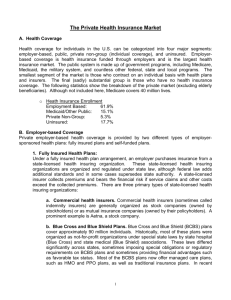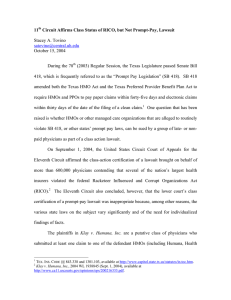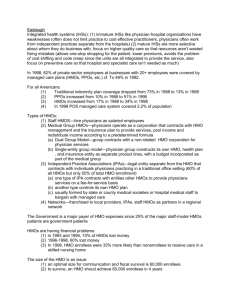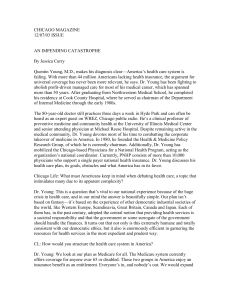What is the Difference Between Health Maintenance Organization
advertisement
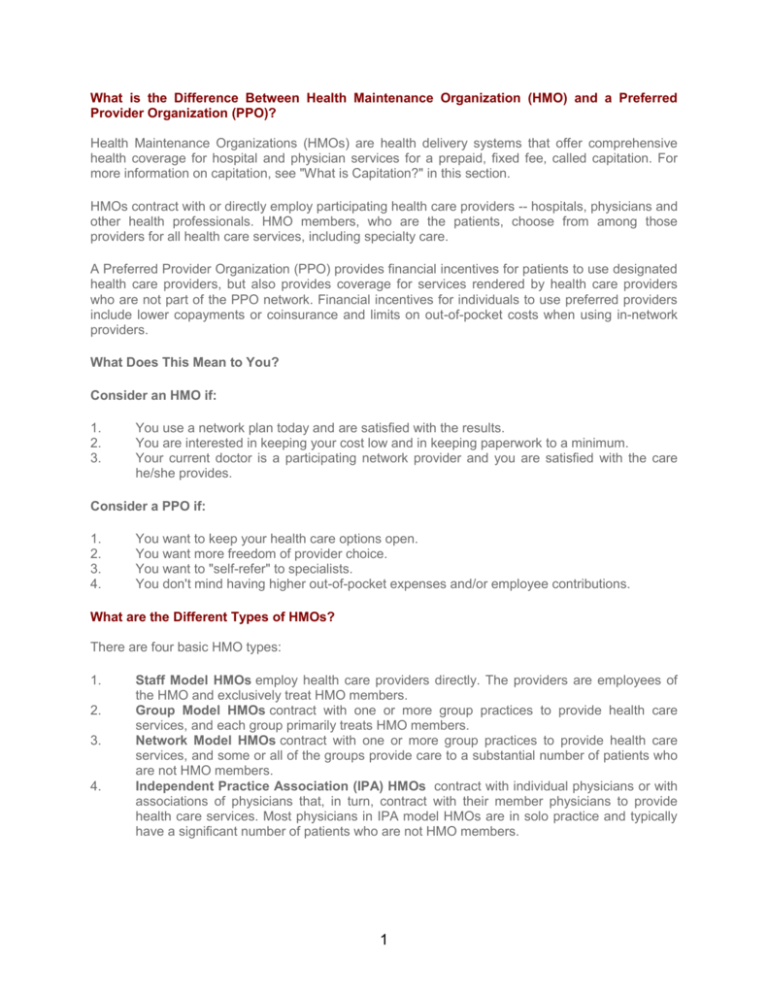
What is the Difference Between Health Maintenance Organization (HMO) and a Preferred Provider Organization (PPO)? Health Maintenance Organizations (HMOs) are health delivery systems that offer comprehensive health coverage for hospital and physician services for a prepaid, fixed fee, called capitation. For more information on capitation, see "What is Capitation?" in this section. HMOs contract with or directly employ participating health care providers -- hospitals, physicians and other health professionals. HMO members, who are the patients, choose from among those providers for all health care services, including specialty care. A Preferred Provider Organization (PPO) provides financial incentives for patients to use designated health care providers, but also provides coverage for services rendered by health care providers who are not part of the PPO network. Financial incentives for individuals to use preferred providers include lower copayments or coinsurance and limits on out-of-pocket costs when using in-network providers. What Does This Mean to You? Consider an HMO if: 1. 2. 3. You use a network plan today and are satisfied with the results. You are interested in keeping your cost low and in keeping paperwork to a minimum. Your current doctor is a participating network provider and you are satisfied with the care he/she provides. Consider a PPO if: 1. 2. 3. 4. You want to keep your health care options open. You want more freedom of provider choice. You want to "self-refer" to specialists. You don't mind having higher out-of-pocket expenses and/or employee contributions. What are the Different Types of HMOs? There are four basic HMO types: 1. 2. 3. 4. Staff Model HMOs employ health care providers directly. The providers are employees of the HMO and exclusively treat HMO members. Group Model HMOs contract with one or more group practices to provide health care services, and each group primarily treats HMO members. Network Model HMOs contract with one or more group practices to provide health care services, and some or all of the groups provide care to a substantial number of patients who are not HMO members. Independent Practice Association (IPA) HMOs contract with individual physicians or with associations of physicians that, in turn, contract with their member physicians to provide health care services. Most physicians in IPA model HMOs are in solo practice and typically have a significant number of patients who are not HMO members. 1 What Does This Mean to You? Physicians are paid based on their relationship to the health plan. Some plans pay their doctors as staff so these doctors treat only patients of the HMO that employs them. A good example of the Staff Model HMO is Kaiser Permanente. Other physicians are paid a capitated fee by the HMO based on how many services each member (i.e., patient) is likely to use each month. Sometimes doctors are paid more money if they help save the plan money by ordering fewer tests or not referring patients to specialists. You may want to check out how the doctors on each plan are paid to see if they are given any financial incentives to over-treat or under-treat you. For more information on capitation, see "What is Capitation?" in this section. Remember to read your plan carefully to learn which specialists you can see. While the directory you get from your health care provider can have hundreds of specialists in the network, you don't necessarily get to pick your specialist. For example, if your Primary Care Physician is a member of an IPA, he/she will probably refer you to one of the doctors in his/her medical group. Also, a San Francisco-area doctor may not be able to send you to a Los Angeles-area specialist, even if that specialist is in the plan's network. What is an Indemnity Plan? In traditional fee-for-service health insurance plans, the physician billed the patient a fee for the services performed; the patient paid the bill and was reimbursed by the insurance company. In feefor-service plans, physicians are compensated for tests and treatments they authorize, subject to insurance companies' Utilization Review procedures. Managed care plans are generally not fee-forservice. What Does This Mean to You? Fee-for-service plans offer complete freedom of provider choice and let you receive care anytime and anywhere. However, these types of plans are rapidly disappearing due to rising health care costs. Under a fee-for-service plan, your health plan may have a fixed amount that it pays your physician for particular services, also known as "usual and customary." These words can make a real difference in the size of your medical bill. For example, if your plan requires you to pay 20% of the costs of an operation, does that mean 20% of the actual costs or 20% of the "usual and customary charges"? Look into how much you will have to pay for services. You may also want to check out how the doctors on each plan are paid to see if they are given financial incentives to over- or undertreat you. Consider a fee-for-service plan if: 1. It is offered through your employer. 2. Your current doctor is not a member of any network. 3. You don't mind increased out-of-pocket costs. 2



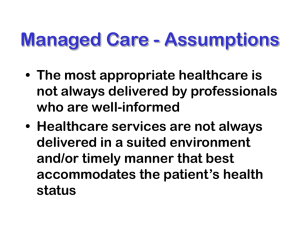

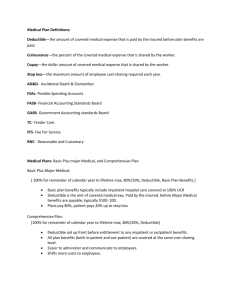


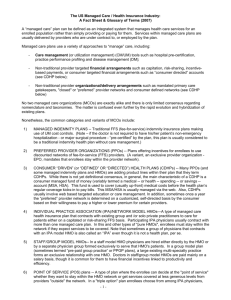
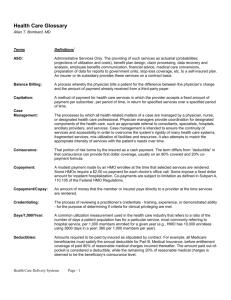

![[source]](http://s2.studylib.net/store/data/015396650_1-f1acc7042a9d63c06dcb7c0729147336-300x300.png)


